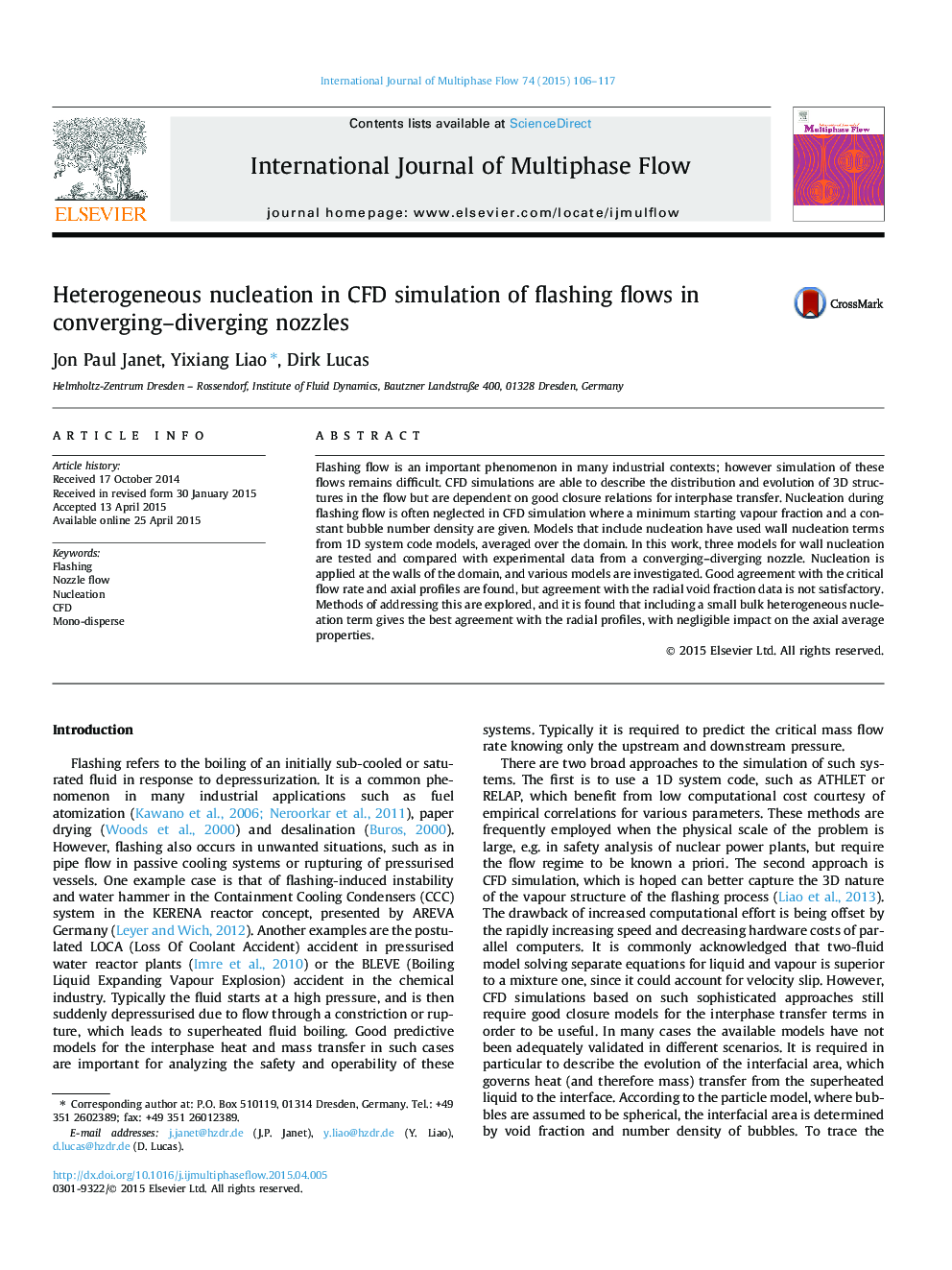| Article ID | Journal | Published Year | Pages | File Type |
|---|---|---|---|---|
| 667224 | International Journal of Multiphase Flow | 2015 | 12 Pages |
•Three-dimensional CFD simulation using two-fluid model used.•Flashing flow in a converging–diverging nozzle simulated.•Heterogeneous nucleation included and discussed.•Available nucleation models examined and compared.•Results with experimental data compared.
Flashing flow is an important phenomenon in many industrial contexts; however simulation of these flows remains difficult. CFD simulations are able to describe the distribution and evolution of 3D structures in the flow but are dependent on good closure relations for interphase transfer. Nucleation during flashing flow is often neglected in CFD simulation where a minimum starting vapour fraction and a constant bubble number density are given. Models that include nucleation have used wall nucleation terms from 1D system code models, averaged over the domain. In this work, three models for wall nucleation are tested and compared with experimental data from a converging–diverging nozzle. Nucleation is applied at the walls of the domain, and various models are investigated. Good agreement with the critical flow rate and axial profiles are found, but agreement with the radial void fraction data is not satisfactory. Methods of addressing this are explored, and it is found that including a small bulk heterogeneous nucleation term gives the best agreement with the radial profiles, with negligible impact on the axial average properties.
